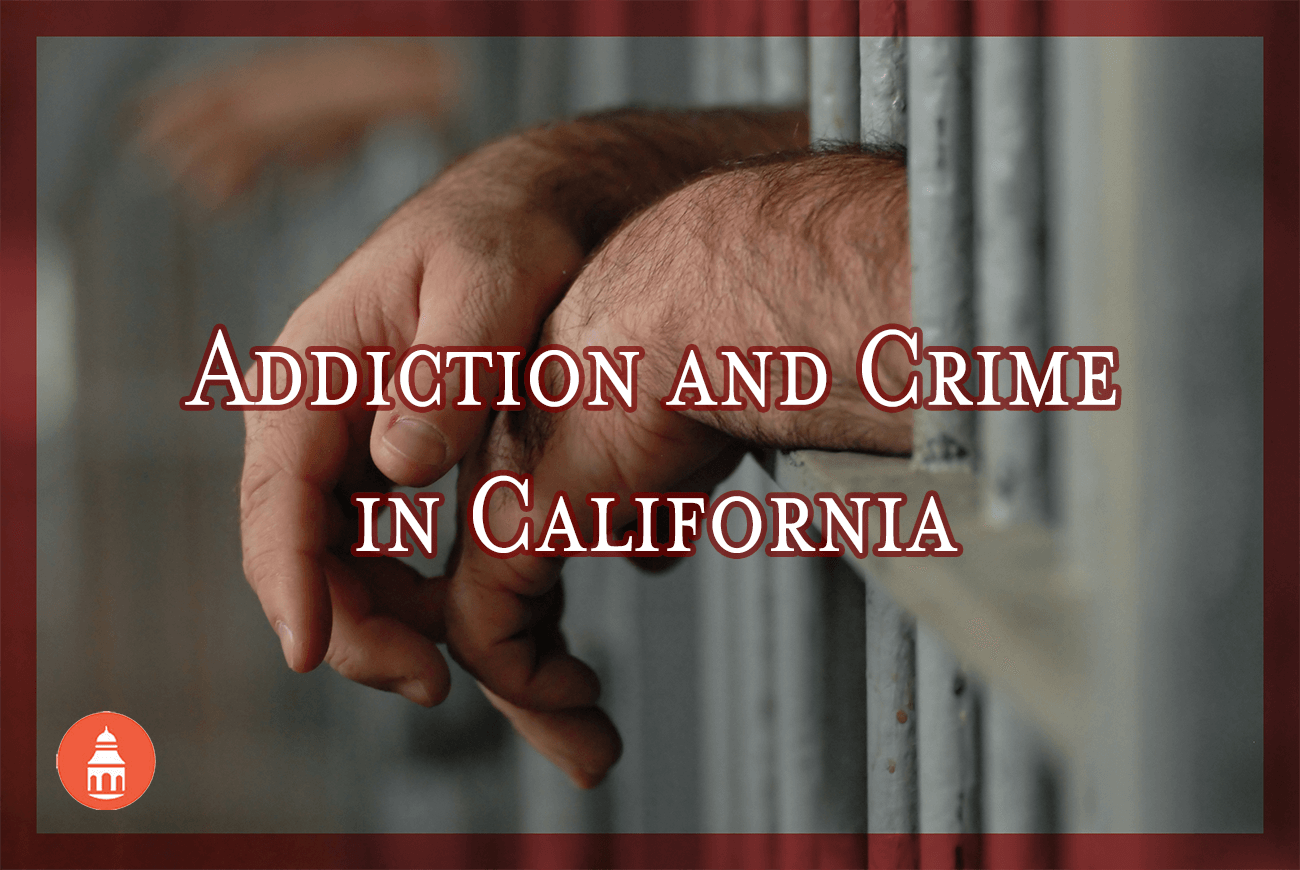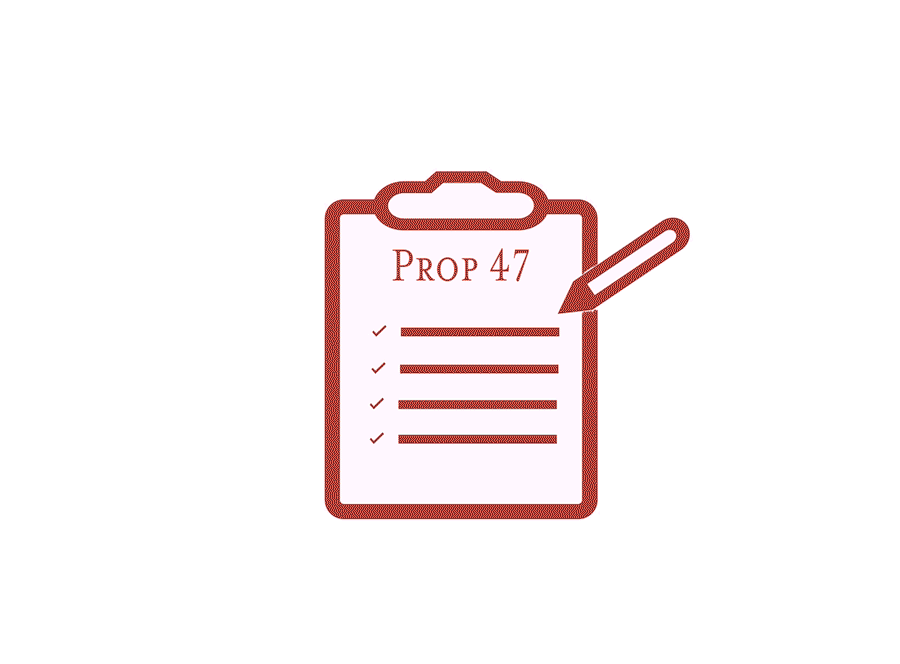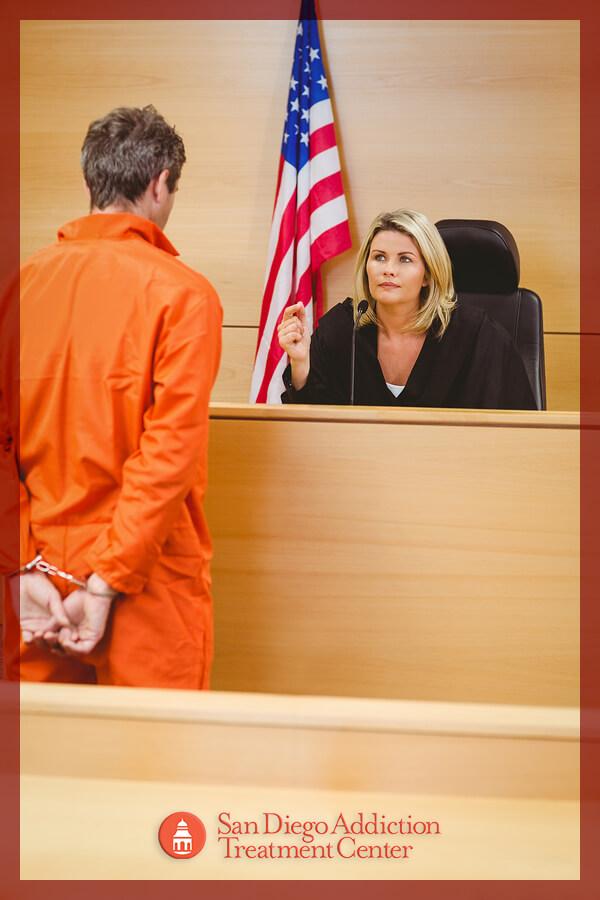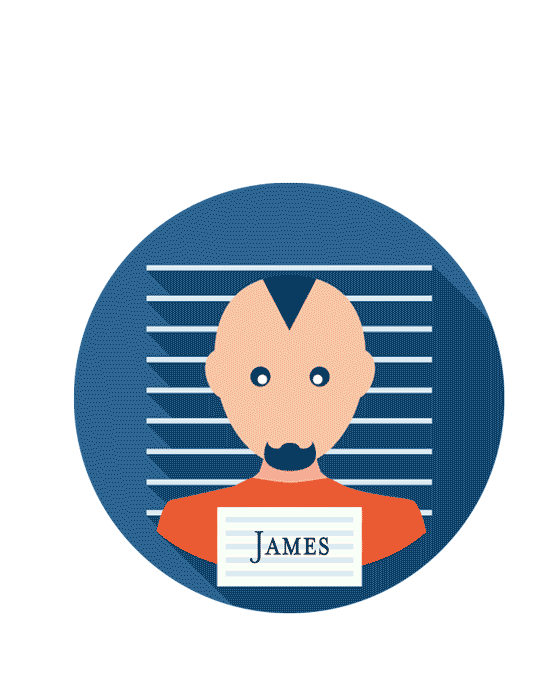The relationship between substance abuse and crime is a deep and complex one. This is especially true in the state of California, which led the way in criminalizing even the smallest of drug-related offenses, and then broke precedent decades later by removing most of those offenses from its books. To look at addiction and crime in California, one of the biggest and most influential states in America, is to look at the front lines in the battle of how to understand the scope and effects of drug trafficking and abuse.

California’s Cruel and Unusual Punishment
California’s battle started as far back as 1994, with the passage of its version of the so-called “three strikes law,” the colloquial expression for what are legally known as “habitual offender laws.” Courts will issue harsher sentences on people convicted of an offense if those people have already been convicted of two previous offenses. The theory behind three strikes laws, like the one enacted in California, is that individuals who are likely to commit their third crime on their second “strike” will be deterred from doing so.
Crime rates dropped, and have been in decline for some time, but criminologists are split as to whether the three strikes law can take credit for the cleanup.[1] Where there is less debate is on what the three strikes law did to California; people who had committed even the most trivial of crimes (such as stealing a slice of pizza) could be sentenced to decades-long prison terms, because it happened to be their third crime. It was the definition of “cruel and unusual punishment,” in the words of Rolling Stone magazine.[2]
Reason magazine was less ironic but far harsher, saying that California’s laws were among the most draconian in the nation, to the point where the state’s jails and prison population ballooned out of control.[3] Between 1980 and 2010, correctional facilities grew by 570 percent; California’s general population increased by just 57 percent in that same time period. Facilities themselves suffered under the brunt of thousands of inmates being forced to share the same space; prisons were not equipped to deal with the inevitable healthcare issues that arose from the law, so much so that California’s arrestees committed suicide 80 times more than inmates at other jails across the country. Eventually, the US Supreme court ruled 5-4 that California’s overcrowded and understaffed prisons were in violation of the Eighth Amendment’s protections against cruel and unusual punishment, and ordered the state to reduce its prison population by 30,000.[4], [5]
Reclassifying Crime in California

One way California did this was by reclassifying the nature of the offences for which people could be arrested, with an eye on reducing the harsh sentencing for minor and first-time drug crimes. This reclassification came in the form of a ballot initiative known as Proposition 47, which reduced specific drug possession felonies down to misdemeanors. Individuals who were already serving a felony conviction for drug possession would be allowed to petition the court for resentencing. Proposition 47 would not extend to prisoners with previous convictions for violent or serious crimes.[6]
Almost immediately following the ratification of Proposition 47, police departments across California noted a drop in narcotics arrests, which did ease some of the strain on the prison system. However, police also noted a rise in property crime, which is now widely believed to be one of the many dimensions of addiction and crime.
A Los Angeles City Councilman and former Chief of Police for Los Angeles wrote to the Los Angeles Times to express his concern about the “unintended consequences” of Proposition 47.[7] Among his points was that the people who break the law by buying illegal drugs also break other laws; removing the threat of significant jail time from the equation, empowers those people to steal and burglarize property to fund their drug habit. It’s a connection that has long been at the question of rewriting drug laws. “Crime increases as drug use does,” says Vancouver, Washington’s The Columbian.[8] As far back as 1992 – even before the passage of California’s habitual offender law – Florida State University asked if property crime was caused by drug use or drug enforcement policy.[9]
Rampant Drug-Related Crime
For some in California, there is no question. The San Francisco Chronicle writes of an “explosion” in local property crimes “due to Proposition 47.”[10] The Chronicle quotes data from the FBI that shows that San Francisco experienced the biggest increase in rates of property crime from 2014 to 2015. The statistics come from local and state police departments, all submitting data to the FBI’s Uniform Crime Reporting Program. The FBI then compared crime rates from 2014 to 2015, after Proposition 47 was passed. Other reporting has further cast doubt on the long-term benefits of the reform; an increase in car break-ins, for example, which went up by 31 percent between 2014 and 2016, was described by the paper as “rampant.”[11]
The Chronicle blames Proposition 47 for reducing and even eliminating the penalties for property crimes, leading to a spree of such crimes, as people who are physically and psychologically dependent on illegal substances have one less barrier in their way to procuring money to get more drugs.
By comparison, the next four largest states in the country – Florida, Texas, New York, and Illinois – all saw decreases in property crime in the same period of time that San Francisco and California reeled from the increase thereof.
Property crime causes enough headaches, but violent crime rates also increased. From 2014 to 2015, San Francisco placed 8th on the number of cities that saw its frequency of incidents of violent crime go up. Over the entire state of California, 48 other cities noted similar problems, and 34 of those cities saw increases of violent crime by more than 10 percent.
The cities are paying an economic toll. San Francisco lost $120 million in dealing with the crimes that occurred during the spree of 2014-2015. Los Angeles County spent $250 million in that same timeframe. The San Francisco Chronicle repeatedly savaged the “reckless” Proposition 47 as nothing more than an experiment in criminal justice reform – one that eliminated penalties for drug-related criminal activity and left taxpaying citizens with the bill.
Drug Courts and Criminal Justice Reform

That point is made by the National Association of Drug Court Professionals (NADCP), which has touted the effects of drug courts in other jurisdictions across the country. Drug courts have long been praised for the way they offer users a way out of the cycle, promoting accountability by erasing criminal records as a way of rewarding treatment milestones. NADCP notes that individuals who are enrolled in a drug court program because there are legal implications tend to perform better than those who go to drug courts of their own free will. Users are compelled by the influence of the criminal justice system – channeled by drug courts – to actively participate in treatments and community services.
But if that motivator is removed, then drug court professionals and police officers fear that addicts have no reason to stop using drugs, particularly if those addicts know that they’ll be back on the streets while the officers are still at their desks. For that reason, NADCP officially came out against Proposition 47, knowing that for all the good that drug courts do, the system can be rendered useless if it is stripped of its leverage.[14] The executive director of the Countywide Criminal Justice Coordination Committee, an organization that administers and manages drug courts, told the Los Angeles Times that Proposition 47 gives addicts no incentive to participate in programs that could remove them from the drug-crime cycle.[15]
The result, police tell NPR, is that more drug users are free to steal, to keep their habit going, The police chief of Huntington Beach said his city saw property crimes increase in the 12 months after Proposition 47 was signed. There was a 21 percent spike in car theft, a 30 percent increase in larceny from vehicles, and a 33 percent rise in garage burglaries. Police attribute a lot of those numbers to “lower-level drug offenders who are now out and trying to support their habit,” in the words of the Huntington Beach police chief.
Proposition 47 supporters say that police are being selective with their numbers and reporting. The manager of Californians for Safety and Justice, one of the groups that supported the proposition, emailed NPR to say that other Californian cities experienced a drop in property crime. He asked if the police chiefs interviewed for NPR’s story would give credit to Proposition 47 for reducing the amount of crime in those communities.
Similarly, public health and drug addiction experts have defended Proposition 47, arguing that a better approach was required after the three-strikes laws placed an inhuman burden on California’s prison system, and national crime data suggested that habitual offender laws were not as effective in deterring violent crime as was once thought. An evolving understanding of the nature of substance abuse also led to calls for being “smart on crime,” to think of drug addiction as a disease that required treatment and not a moral failing that required incarceration. Speaking of the positive effects that Proposition 47 would have on the War on Drugs, the Huffington Post wrote that reducing the nature of drug charges will allow the people most vulnerable to the drug trade a humane way out of their quagmire.[16]
Addiction, Crime, and Frequent Fliers

But for someone with an addiction problem, who is not compelled to enroll in a drug court program, Proposition 47 presents the wrong kind of opportunities. By April 26th of the following year, Rabenberg had been arrested six times. All of the arrests were misdemeanors, even when he brandished a deadly weapon while having drugs on his person, so he was eligible for release within a matter of days of his arrest. Like clockwork, he would be back in cuffs a few weeks later; and like clockwork, he would be released again.
Rabeberg’s case was one of the thousands that the San Diego City Attorney and Chief of Police looked at, as they tried to think of what they could do to convince the “frequent fliers” to voluntarily enroll in a drug court program. With Proposition 47 removing the threat of significant jail time, many people affected by addiction find it easier to cool their heels in jail for a few days and then return to their drugs. The city attorney told the Washington Post that addicts don’t abide by the honor system; even when they get their court date, their cases are of such low priorities that there’s nothing to make them show up. Since people like James Rabenberg aren’t causing trouble, and aren’t interested in getting help, no one – not police, not social workers – can do anything about it.
The Washington Post published its story on James Rabenberg in October 2015, almost a year after his first arrest. By that time, he had been arrested 19 times, causing so much frustration in his local San Diego court that someone scrawled “Enough!” on his case file. When the Post story was published, Rabenberg had failed to make his scheduled court date.[17]
White Coat Crime
Not all the addiction-related crime in California is committed by addicts. In MacArthur Park in Los Angeles, a pharmacy placed an order for 1,500 tablets of the oxycodone painkiller in just one week in September 2008. The oxycodone was branded as OxyContin, manufactured and distributed by Purdue Pharma, which paid a fine of $600 million in 2007 for deceiving regulators, doctors, and patients about the addictive nature of their product and the potential that it could be abused.[18] That pharmacy was nothing more than a pill mill, an illegal operation that sells prescription medication without any legitimate oversight or regulation, and in one week, it sold more oxycodone than actual pharmacies sold in a month.
The doctor who ran that pill mill wrote 11,000 fraudulent prescriptions in the month after receiving the order. By the end of the year, she had illegally distributed over 73,000 oxycodone pills, making almost $6 million in the process.
Pill mills exist because prescription medication has become one of the hottest commodities on the black market of drugs. Many thousands of people receive prescriptions for legitimate medical reasons – sports injuries, workplace injuries, depression, cancer pain – but become hooked on the painkilling and euphoric effects of the drugs. If the right conditions are met, the tablets become the only source of comfort and ease in the patient’s life (not too dissimilar from the 23-year-old heroin addict living out of her Volvo who said that heroin was the only thing that made her feel normal).
Thanks to aggressive marketing by pharmaceutical companies (like Purdue Pharma), as well as criminally and ethically negligent practices to stifle information about the dangers of such drugs, addiction to prescription opioids has reached epidemic levels across the country.[19]
Cashing in on the Epidemic

The word epidemic was also used by the Los Angeles Times to describe the situation in California, where a new law that protected pharmaceutical corporations from government regulation was criticized for giving those companies a way to get the Drug Enforcement Agency to postpone or abandon federal investigations into unusual or suspicious orders of controlled medication, like the ones that the MacArthur Park pill mill placed.[20]
The “crime” element of pill mills is very different from the property crime that some meth addicts and heroin users commit to fund their habit, but California does not look kindly on how the operators of such establishments contribute to the state’s drug problem. In February 2016, for example, a Los Angeles judge sentenced Hsiu-Ying “Lisa” Tseng, a Southern California doctor, to 30 years to life in prison, for “unlawfully prescribing a controlled substance,” an act that led to the deaths of three of her patients (for which she was charged with murder). The decision marked the first time that a doctor was held criminally liable for “recklessly prescribing drugs,” in the words of the Los Angeles County Deputy District Attorney.
Tseng was not part of a pill mill setup, instead being a self-employed physician who, as CNN put it, “[abandoned] patient care in pursuit of greed,” but she fell to the same laws that target illegal or dangerous prescription practices. There are not too many doctors who go into business for themselves – most work in collusion with drug smuggling rings – but even the few who do can devastate a local community. A retired DEA agent, who was one of the first law enforcement officials to go after corrupt doctors in Southern California, told CNN that “you can draw a straight line from pharmaceutical opiates to shooting heroin,” and that individuals who got their fix from drugs given to them by doctors eventually resorted to directly abusing heroin, being the kind of people who cops in Huntington Beach would find living out of their cars.
From Pill Rings to Dirty Doctors: Addiction and Crime in California
Prosecutions related to pill mills are rare, says San Jose’s Mercury News. As the prosecutor of the Santa Clara County District Attorney’s narcotics unit told the paper, making the connection between “the pill rings on the street [and] the dirty doctors” is “very difficult.” Cases against doctors are hard to make, since the prosecution has to prove that the doctors were aware that their prescribing methods were excessive.
Sometimes, however, corrupt doctors make life easier for the police. An undercover officer got 870 prescriptions from one such physician, despite ever having his pulse, blood pressure, or medical history taken. The doctor counseled the cop on how to pass a urine test, and was recorded as saying that the FBI and DEA were “a pain in the neck” and that she was afraid of being monitored by the government.
The mother of one of the people who died as a result of that doctor’s prescriptions said that such doctors are “basically drug dealers.”[21] It is another perspective on the problem of crime that addiction creates; those who fall prey to it and those who exploit it. Having been at both ends of the spectrum – the “tough on crime” days of habitual offender laws, to the “smart on crime” era of Proposition 47 – California knows, perhaps better than any other state, that the nature of the relationship between crime and drug use is as complex and unpredictable as those two issues on their own.
[1] “L.A.’s Homicide Rate Lowest in Four Decades.” (January 2011). NPR. Accessed October 3, 2016.
[2] “Cruel and Unusual Punishment: The Shame of Three Strikes Laws.” (March 2013). Rolling Stone. Accessed October 3, 2016.
[3] “Is It Time to Abolish Three Strikes?” (May 2016). Reason. Accessed October 3, 2016.
[4] “Californians Vote to Weaken Mass Incarceration.” (November 2014). The Atlantic. Accessed October 3, 2016.
[5] “Justices, 5-4, Tell California to Cut Prison Population.” (May 2011). The New York Times. Accessed October 3, 2016.
[6] “What You Need to Know About Proposition 47.” (n.d.) California Department of Corrections and Rehabilitation. Accessed October 3, 2016.
[7] “Prop. 47 is Achieving Its Main Goal, but with Unintended Consequences.” (January 2015). Los Angeles Times. Accessed October 3, 2016.
[8] “Crime Increases as Drug Use Does.” (December 2012). The Columbian. Accessed October 3, 2016.
[9] “Is Property Crime Caused by Drug Use or Drug Enforcement Policy?” (1992). Applied Economics. Accessed October 3, 2016.
[10] “An Explosion of California Property Crimes — Due to Prop. 47.” (March 2016). San Francisco Chronicle. Accessed October 3, 2016.
[11] “SF Car Break-Ins Up 31 Percent, Nearly Triple in 5 Years.” (March 2016). San Francisco Chronicle. Accessed October 3, 2016.
[12] “Homeless Youth Bring Bold, Confrontational Approach to Santa Clarita.” (January 2015). Los Angeles Times. Accessed October 4, 2016.
[13] “California Cops Frustrated with ‘Catch-And-Release’ Crime-Fighting.” (January 2016). NPR. Accessed October 4, 2016.
[14] “NADCP Opposes California’s Proposition 47.” (n.d.). National Association of Drug Court Professionals. Accessed October 4, 2016.
[15] “Prop. 47 Jolts Landscape of California Justice System.” (November 2014). Los Angeles Times. Accessed October 4, 2016.
[16] “California Voters Deal Blow to Prisons, Drug War.” (November 2014). The Huffington Post. Accessed October 4, 2016.
[17] “In California, Prop 47 Has Turned into a Virtual “Get-Out-of-Jail-Free” Card.” (October 2015). Washington Post. Accessed October 4, 2016.
[18] “In Guilty Plea, OxyContin Maker to Pay $600 Million.” (May 2007). The New York Times. Accessed October 4, 2016.
[19] “Understanding the Epidemic.” (June 2016). Centers for Disease Control and Prevention. Accessed October 4, 2016.
[20] “Amid Opioid Epidemic, Rules for Drug Companies Are Loosened.” (July 2016). Los Angeles Times. Accessed October 4, 2016.
[21] ” Deadly Overdose: Los Gatos Doctor Prosecuted in Rare Pill Mill Case.” (June 2015). The Mercury News. Accessed October 4, 2016.
Get Help Now.
Has addiction stolen your loved one? Take action and call (619) 577-4483 or fill out this form to speak with a Treatment Consultant about our drug rehab center or one of our facilities across the United States.
